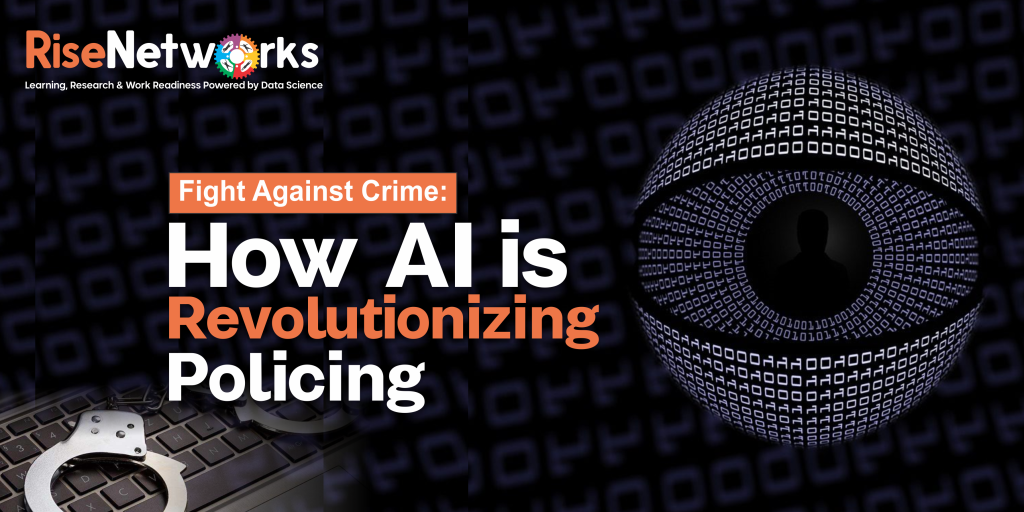What comes to your mind when you hear the word crime?
You think of atrocities like Armed Robbery, Rape, Human Trafficking and many more.
Crime is the breaking of rules or laws for which some governing authority can ultimately prescribe a conviction.
As global crime rates continue to rise, the race is on to create a smarter and more effective way to combat it.
Recent Advancement in technologies has helped in the fight against crime, as the process of crime prevention and detection is becoming more efficient.
Let me share a quick story with you. I recall a few years ago when a buddy of mine was abducted by gunmen and the matter was being investigated by the police.
I had the opportunity to experience how the Nigerian police force uses technological gadgets for effective policing.
Though many think that the Nigeria Police force is a quack agency not efficient enough to combat crimes.
I was impressed by what I witnessed, I saw a clear demonstration of how the men of the Nigeria Police Force Abuja Command used a GPS tracker and other technological software to locate the kidnappers’ whereabouts and swung into action.
Let me stop my story here.
Before, the Police were completely responsible for all aspects of crime detection and prevention. But today, several tasks are already being taken over or upgraded by technology solutions such as AI.
Numerous studies have shown that people are pretty bad at predicting how criminals will strike or what kind of crime will occur. This is one reason why law enforcement agencies and governments are looking to artificial intelligence for policing.
When it comes to fighting crime, nothing can be left to chance.
That’s why AI (artificial intelligence), which is already revolutionizing medicine, finance, and transportation, is now moving into the world of policing with the potential to transform how we think about, predict, and prevent crime.
From predicting where crimes will occur so police can keep a closer eye on certain areas to flagging potentially dangerous situations before they occur, AI is being used to make the world a safer place.
It’s also making policing more equitable: AI can help reduce bias in policing by analyzing data and presenting clear facts to officers and decision-makers who might otherwise rely on their flawed perceptions.
But AI is only one tool that can make policing more fair and efficient. Other tools include better training for officers (so they know how to use AI tools effectively) and targeted efforts to reduce inequality and poverty in communities because when citizens have access to adequate housing, food, medical care, jobs, and education, these factors reduce crime rates.
Artificial intelligence is impacting many industries, including Policing.
Here is how it’s Revolutionizing Policing in the fight against crime.
-Faster processing of data
One of the biggest challenges in law enforcement is having to analyze huge amounts of data, which can slow down investigations.
AI can help with this, as it can process large amounts of data much faster than a human ever could. It’s common for AI to be programmed to recognize patterns, which means it can analyze data looking for patterns that might indicate a crime or a threat before flagging it for an officer.
-Help from robots
AI-controlled robots are being used in many areas in policing today. A robot that is controlled by AI can be sent into a dangerous situation, like an active shooter situation or a hostage situation, to gather information and assess the scene before sending officers in.
This can keep officers safe while also allowing them to more effectively deal with the situation at hand when they do arrive. It also lets them identify exactly where they need to go to resolve the situation as quickly as possible.
-Predicting crimes
Machine learning algorithms crawl through huge amounts of historical data to predict when and where crimes will occur. They do this using several different techniques, including deep learning, neural networks, natural language processing, and computer vision.
These techniques look for patterns that could indicate future criminal activity, for example, machine learning algorithms might notice that crimes tend to spike in certain neighbourhoods during warm weather months, or whenever construction is taking place nearby. These insights allow law enforcement to be more proactive about combating crime before it occurs.
-Surveillance
Computer vision technologies can identify suspects from security footage, even in low-quality images or videos. Several agencies have recently implemented cutting-edge AI-enabled surveillance systems like these to recognize faces in public spaces and flag them for further investigation if they match those on a database of convicted criminals or missing persons.
-Crime Analysis
AI can be used to help sort through information about crimes to find connections between seemingly unrelated incidents or people. It can also be used to analyze data from past crimes to find patterns that can be used to predict future crimes and prevent them from happening.
-Social Media Monitoring
Police can use social media surveillance techniques to detect threats before they occur, as well as track down offenders who have attempted to mask their identities online.
The future holds numerous benefits for law enforcement agencies around the world. The most crucial benefit of AI will be how it will make their jobs easier, allowing them to spend more time preventing crimes and less time on administrative tasks.

